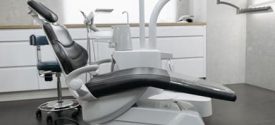Section 179 Deduction: How to Unlock Maximum Tax Break
That shiny new delivery van? The servers keeping the lights on? Essential tools, but man, they chew through cash flow. Every savvy small business owner feels that pinch when investing in the gear that drives growth. Here’s the good news: section 179 of the internal revenue code isn’t just tax jargon, it’s a powerful lever designed precisely to ease that burden.
This guide cuts through the complexity. Discover how the section 179 deduction transforms necessary equipment purchases and qualifying upgrades (think vital HVAC systems or new security installations) into substantial, immediate tax savings. We’ll unpack the updated $1.25 million limit, navigate tricky vehicle rules, reveal how to pair it with amortissement bonifié, and outline the exact steps to claim your maximum break. Stop leaving money on the table; let’s unlock your deduction.
What is section 179 deduction
Forget the complex tax code speak. At its core, Section 179 of the Internal Revenue Code is refreshingly straightforward: it lets businesses deduct the full purchase price of qualifying business equipment et software in the very year they put it to work. Think of that $50,000 industrial printer a local signage shop bought last June, instead of depreciating it slowly over five or seven painfully slow years, section 179 deduction allows writing off the entire cost against income. Boom. Immediate impact.
Why wait? This powerful immediate deduction directly slashes your current year’s revenu imposable, freeing up vital cash flow. It’s the government’s way of saying, “Invest in your business’s tools and growth.” Frankly, it’s one of the smartest capital investment incentives out there for proactive owners. More money now means more opportunity.
Lorem ipsum dolor sit amet, consectetur adipiscing elit. Ut elit tellus, luctus nec ullamcorper mattis, pulvinar dapibus leo.
What qualifies? Eligible property for section 179 deduction
Not every business purchase gets the Section 179 deduction golden ticket. The IRS has rules, naturally. Think tangible assets actively used to generate income. That fancy espresso machine for the new downtown cafe? Likely yes. The owner’s vintage sports car? Hard no.
Here’s a snapshot of common qualifying property:

- Machinery & equipment: Lathes, printers, commercial ovens – the tools grinding away daily.
- Computers & peripherals: Laptops, servers, monitors essential for operations.
- Office furniture: Desks, chairs (within reason!), filing systems – your operational backbone.
- Off-the-shelf software: The CRM system bought last quarter? Absolutely.
- Qualified real property improvements: Vital upgrades like new HVAC systems, roofs, fire protectionou security systems for non-residential buildings. (Link: IRS guidance on QIP)
- Certain vehicles: Heavy work trucks, vans over 6,000 lbs GVWR (more on tricky vehicle rules next).
Non-negotiables: The asset must be purchased (not leased, inherited, or gifted), new to your business, placed in service during the tax year, and used more than 50% for business. Land, buildings themselves (not the improvements!), and property used outside the US generally don’t make the cut. Got it? Good. Now, about those limits…
Unlocking the section 179 deduction limits
Alright, let’s talk numbers, because limits define the playing field for 2025’s Section 179 deduction. Forget last year’s figures; these are the crucial ceilings you need now:
- Maximum deduction: $1,250,000. That’s the cap on what you can deduct total under Section 179 for the year.
- Spending phase-out threshold: $3,130,000. This is where things get interesting. Spend more than this on qualifying assets? Your maximum deduction starts shrinking, dollar-for-dollar.
- Total phase-out: $4,380,000. Hit or exceed this total equipment spend? Sadly, the Section 179 deduction vanishes completely for 2025. Poof.
- SUV/Vehicle limit: $31,300. Here’s the rub – even if that shiny new luxury SUV weighs over 6,000 lbs (but under 14,000 lbs), its deduction under Section 179 is capped here. *(Yep, even that tricked-out sprinter van the boutique hotel uses for guest shuttles, business use must still exceed 50% too!)*
These figures, officially set by the IRS in Rev. Proc. 2024-40, increased slightly from 2024 – a small win, but crucial for planning big purchases. Understanding these spending caps is non-negotiable for maximizing your break.
Navigating vehicle rules: Trucks, vans & SUVs under section 179
Vehicle deductions? Here’s where Section 179 gets notoriously sticky. That brand-new pickup for your landscaping crew? Maybe. The plush SUV for “client meetings”? Probably not like you hope. It all hinges on Gross Vehicle Weight Rating (GVWR), check the door jamb sticker, don’t guess! (Always verify the official GVWR specs for your exact model).
Voici la répartition :
- Lightweights (≤ 6,000 lbs GVWR): Forget Section 179. Standard depreciation applies (slower write-off). Your standard sedan or small crossover falls here.
- Mid-Size SUVs (6,001 – 14,000 lbs GVWR): Capped at $31,300 for 2025 under Section 179. That luxury SUV? Likely falls here, maxing out fast.
- Heavy Workhorses (> 6,000 lbs GVWR + Cargo Focus): Think big pickups/vans with a cargo bed ≥6 feet or no rear seating. Potentially eligible for the full Section 179 deduction like other equipment. The contractor’s F-350 dually? This is its sweet spot.
Remember: The >50% business use percentage rule applies rigorously to any vehicle claim. Keep impeccable logs.
How to claim your deduction: The section 179 election process
So you’ve got qualifying gear and understand the limits. How do you actually claim this powerful section 179 deduction? It’s not automatic, you must actively elect it. Missing this step? Kiss those savings goodbye. Here’s the drill:
- Gather your proof: Invoices, payment records, proof of placing the asset “in service” (think the day that CNC machine first cut metal, or the software went live). Crucially, document that >50% business use, mileage logs for vehicles, time studies for shared equipment. (We once saw a promising bakery claim denied over undocumented “tasting” use of a delivery van, don’t be that baker!).
- Tackle form 4562: This is the mandatory IRS form. You’ll detail each asset, its cost, and the elected deduction amount right in Part I. It’s not fun, but it’s essential.
- File it right: Submit form 4562 with your original, timely-filed tax return (extension filings count!). Remember: Your total Section 179 deduction can’t exceed your business’s net taxable income for the year. Any leftover amount? It carries forward indefinitely, a nice safety net.
Get the paperwork right. It’s the lock on your savings vault.
Maximizing savings: Combining section 179 & bonus depreciation
Want to supercharge your first-year deductions? That’s where amortissement bonifié enters the chat. Think of it as the Section 179 deduction’s powerful sidekick, letting you write off an additional percentage of the remaining asset cost after applying Section 179. For 2025, that rate is 40%, a significant chunk, though it stings knowing it was 100% just a few years back and keeps dropping.
Here’s the winning combined strategy:
- Max out section 179 first: Apply it against eligible assets up to its $1.25M limit. (e.g., Claim the full $31,300 on that qualifying heavy work van).
- Then, hit it with Bonus: Take 40% of the remaining basis on those assets plus other qualified property (even used equipment qualifies for bonus, unlike Section 179!).
Crucial difference: Bonus depreciation has no income limit or spending cap. If your business net income is low, lean hard on bonus after section 179 deduction. This combo is the ultimate tax acceleration play for savvy buyers before the bonus rate vanishes.
Strategic considerations & avoiding costly pitfalls
Timing is everything with section 179 deduction. Planning that big equipment purchase for late December? Smart move, as long as it’s truly placed in service by year-end. But don’t feel pressured to max out the deduction if it pushes your income too low, a partial election can sometimes smooth things out. Prioritize assets with longer lives; you’ll get more bang for your buck accelerating their write-off.
Now, the watch-outs. Recapture is a real headache. Sell that qualifying server rack before its five-year life is up, or drop its business use below 50%? You might owe some tax back. Documentation is non-negotiable, vague logs sink claims. And critically, your state tax rules might not mirror federal; that aggressive deduction could create an unexpected state bill. Overlooking these nuances? That’s where the savings vanish.
FAQs: Your burning section 179 deduction questions answered
Q: Can I use section 179 for that used forklift I found at auction?
A : Absolutely, yes! Used equipment qualifies, as long as it’s new to your business, meets the >50% business use test, and was placed in service during the year. It’s a fantastic way to stretch your budget.
Q: What if my deduction exceeds my business income this year?
A : No sweat. The excess section 179 deduction doesn’t vanish; it carries forward indefinitely to future tax years. It’s a built-in safety net.
Q: Does leased equipment qualify?
A : Nope. Section 179 applies only to purchased ou financed (capitalized) assets you own. Leases have different tax treatment.
Q: Can I deduct the cost of my new warehouse building?
A : Generally, no. Buildings themselves don’t qualify. However, significant improvements comme HVAC units, new roofsou fire sprinkler systems added to existing non-residential buildings do qualify under specific rules (QIP).
Q: Is there a hard deadline for putting equipment into use?
A : Critical point: Yes. Assets must be operational and ready for their specific business function by December 31 of the current year. Just buying it isn’t enough. Got it?
Leverage section 179 deduction for smarter business growth
The section 179 deduction remains a powerful tool for 2025. It transforms essential investments, like a new HVAC system for your facility or a heavy work truck expanding services, into substantial immediate tax savings. Accelerating deductions on qualifying assets within the $1.25 million limit unlocks vital cash flow right when needed for operations/growth.
But maximizing this break demands precision. Missteps with vehicle classifications or overlooking the recapture risk if business use dips can convert savings into headaches. Tax law, especially timing and qualification, is rarely DIY territory.
Don’t navigate this alone. The seasoned CPA at H&S Accounting & Tax Services crafts tailored Section 179 strategies. He’ll ensure you maximize your deduction while avoiding pitfalls. Schedule your consultation and convert investments into smarter growth. More money now. More momentum. Simple.






